Would you like contaminated water to be a risk factor in disease transmission to you or your family while traveling by RV? Fresh water is vital for human health and life while traveling in an RV.
When we are on the road, we must stay hydrated with fresh water. But what if freshwater runs out or becomes contaminated? That is why we will discuss how to fill fresh water tank on RV in this article.
There are many freshwater applications in daily life, including food production, power generation, manufacturing, and sanitation. It might be hard to get more clean water when you're in an RV.
Let's begin the discussion on filling freshwater tanks on RVs, cleaning freshwater tanks, and why it is vital to utilize freshwater.
Freshwater: What It is and Why It is Important?
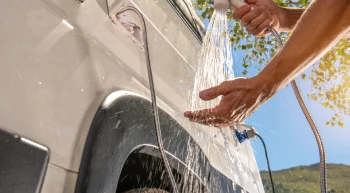
Freshwater is water that has not been affected by human contact or pollution. It is important to drink freshwater because it is necessary for human health and life. Freshwater is also required for food production, power generation, manufacturing, and sanitation.
Freshwater is essential for human health because it is necessary to drink to stay hydrated. One-third of the world's population depends on groundwater as a source of drinking water.
If your RV allows, the water will also go through a water heater, which will allow you to have nice and warm showers. You should never drain the water heater while it's hot or under pressure.
Tools Required for Filling the Fresh Water Tank
To fill the freshwater tank on your RV, you will need a few essential tools, such as:
- A hose that can reach the freshwater tank,
- A water spigot,
- A funnel, and
- A container to hold the water in your RV.
If you do not have a hose long enough to reach the RV fresh water tank, you can use a water tower to fill your RV fresh-water tank. A water system tower is a structure used to store and distribute water. It is usually found in rural areas.
Step-by-Step Guide to How to Fill Fresh Water Tank On RV
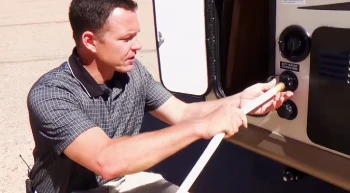
Now that we know why freshwater is important let's discuss how to fill the freshwater tank on your RV. Before filling your RV fresh water tank, make sure that the water is safe to drink. The steps are as follows:
Step 01. Locate the Freshwater Tank on Your RV
The freshwater tank on your RV is usually located in the front of the vehicle. Sometimes, it can be located underneath the sink by which you can fill the tank from the city water connection.
Step 02. Find the Water Spigot on Your RV
The water spigot is usually located near the fresh water tank on your RV. It is a metal stopper with a handle and a freshwater hose attached to it.
Before you open the fresh water tank, make sure to turn off the water at your spigot by turning the knob to the left. If you forget to turn off your water source, you could end up with water all over the floor or on your clothes.
Step 03. Attach the fresh-water Hose to the Water Spigot
Now that your water faucet is turned off, you can attach the hose to it. Make sure that you tighten the hose onto the fixture so it does not fall off the water tank when you take out water later.
Step 04. Insert the Funnel in the Tank
When you're ready to fill your freshwater tank, you can insert the funnel in the water tank. If you have a long fresh-water hose, this step will be easy.
Step 05. Turn on the Water Springer and Fill up The Tank
Now you can turn on the water tap to supply water to your funnel. Then, sit back and watch as the water fills up your freshwater tank. The hose will also have a screw on the connection running to the city water supply.
Step 06. Turn Off the Water Spigot and Remove the Hose
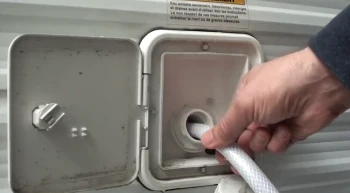
Once your tank is full, you can turn off the water tap and remove the hose. To not come loose, make sure to tighten the hose back onto the fixture.
Step 07. Close the Fresh Water Tank
Close the fresh drinking water tank by turning the knob on top of the tank to the right. This will prevent any water from spilling out of the tank.
Step 08. Clean the Funnel Before You Store It for Future Use
When you're done filling up the tank, it is a good idea to clean the funnel before you store it for future use.
Step 09. Store the Hose in A Safe Place
You can keep the hose in a safe place until you need it again. It is a good idea to coil the hose up so that it does not take up too much space.
Now that you know how to fill your RV’s fresh-water tank in your RV, you can go on your next camping trip with peace of mind.
Different Types of Freshwater Refilling Technique
There are different types of refill techniques that depend on the location and shape of your tank. The three most common ways to fill RV water tank are:
01. Refilling a Water Tank Using a Faucet
When refilling your RV water tank, the easiest way is to use a water hook-up with a faucet. This method is the most common way to fill a water tank. The tap is usually located near the tank and has a hose. This method is quick and easy, but you need to make sure that the tank is not full before you start filling it up.
02. Refilling a Water Tank Using a Pump While Camping
This method is also standard and works well for RVs or boats with a water tank. The pump has a portable and detachable tank, allowing you to refill your tank quickly. The pump can be connected to a faucet, but it is also good to have a garden hose that you can use.
03. Refilling Your Water Tank Using Gravity
This method is the slowest way to refill your water tank, but it does not require any equipment. This method uses gravity to fill up the tank by using a hose placed on the higher ground. Make sure that you have a container to catch the water.
Tips for Filling a Freshwater Tank in an RV While Traveling or Camping
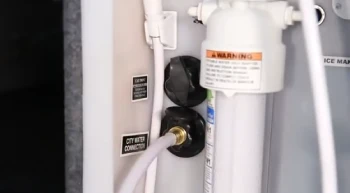
If you're traveling or camping and need to refill your RV's freshwater tank, here are some tips for you:
01. Always Use the Right Type of Hose for Filling up Your RV Water Tank
It is essential to use a hose compatible with your pump and faucet. Usually, you will find a garden hose or RV connector included in the equipment you purchase for refilling.
Check if your hose can be used to refill an RV before buying it. Make sure that the threads match the pump's inlet for a water pump.
02. Turn off The Water When Filling up Your Tank
Make sure to turn off the water before connecting the hose to the tank. You should also turn off the water when you're finished filling up the tank.
03. Keep a Close Eye on Your Funnel
It is easy to lose track of the water level and spill some. Keep a close eye on your funnel so that it does not overflow.
04. Make Sure to Use a Clean Hose When Filling Up Your Tank
Make sure to use a new, clean hose for refilling the tank. A dirty hose can contaminate the freshwater.
05. Keep a Container underneath the tank to Catch Any Spills
Ensure a waterproof container or bowl under the hose while you refill your tank so that any spills can be collected. This prevents dirt from getting into your fresh water tanks and will save you some time when it comes to cleaning up.
06. Always Coil the Hose after Use
It is good to coil the hose up after use, not to take up too much space. This will also help to prevent kinks in the hose.
You can easily refill your fresh water tank while traveling or camping by following these simple tips.
Why We Should Use Fresh Water Instead of Contaminated Water?
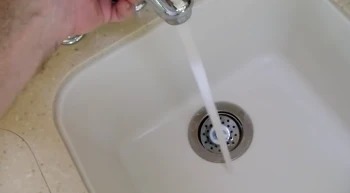
Water is an essential part of human life. It is essential to access clean and safe potable water to meet our daily needs. However, many people worldwide do not have access to clean potable water, which can lead to health problems.
Polluted water can cause various illnesses, including diarrhea, typhoid fever, and cholera. These illnesses can be deadly, especially for children and pregnant women.
Freshwater is crucial for human health and should be used instead of polluted water whenever possible. By using freshwater, we can help to prevent the spread of disease and improve our overall health.
Cleaning Freshwater Tanks
You can do several things to keep your fresh water tanks clean. Some of these include
01: Changing Your Filters Regularly:
Your freshwater tank needs a filter to prevent dirt and particles from getting in. Changing or cleaning your filters is crucial to continue working effectively regularly.
02: Maintaining the Temperature in Your Tank:
The temperature of your tank also needs to be maintained. If the temperature is too high or too low, it can cause bacteria to grow and contaminate the water.
03: Scrubbing Algae Off Filters:
Algae can form on the filters, which will reduce their ability to work. You should regularly scrub algae off of your filters to keep them working effectively.
04: Trimming Plants If Applicable:
If you have plants in your freshwater tank, it is essential to trim them regularly. Overgrown plants can block the light and reduce the oxygen levels in the tank. This can cause bacteria to grow and contaminate the water.
Sanitize Your RV Fresh Water Tank System
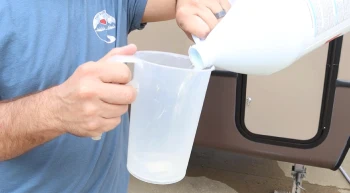
There are some simple ways to keep the water supply running on your motorhome in tip-top condition. Cleaning up the RV water system is more accessible, but it takes some time. Polluted water is dangerous. Always use a water filter and cleanse your system when necessary.
You may want to do this one-time every six months. It's an integral part of your RV maintenance routine. The most important thing is to wait before starting the process. Once all these steps are complete, you can have fresh and safe RV-quality water.
FAQs
Some frequently asked questions that people are most interested about:
01. How Do I Know When My Freshwater Tank is Full?
Different RVs will have different ways of indicating when the tank is full. Some may have a gauge that displays the water level in the tank, while others may have a light that turns on when the tank is full. You can also test the water pressure to understand how full the tank is.
02. Why is My Freshwater Tank Not Filling Up on My RV?
The most common cause of a full tank not filling up is a kink in the hose. If you have a filter on your RV water tank, it may be clogged and need to be cleaned or replaced. You can also check to see if the valve on your RV is functioning correctly.
03. How Do You Know When The Freshwater Tank is Empty?
The most common way to tell if the fresh-water tank is empty is to check the water pressure regulator. If the water pressure is low, the tank is empty. You can also test the water in the tank to see if it is discolored or has a bad odor.
04. When Should I Sanitize My RV's Fresh Water System?
It is generally recommended that you sanitize your RV's freshwater system every six months. However, you may need to do it more often if the water supply is contaminated.
05. How Often Should You Clean the Inside of Your RV's Freshwater Tanks?
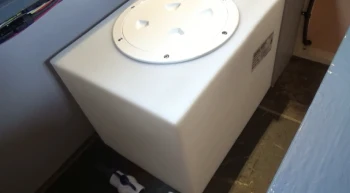
It is generally recommended that you clean your RV's fresh water tank system every six months. It may be necessary to perform this procedure more frequently if the water supply is contaminated.
Verdict
Filling the fresh water tank on an RV is a simple task that requires only some steps. The most important thing is to wait before starting the process.
We hope that after you have read our article on how to fill fresh water tank on RV, you have learned something relevant that will enable you to solve your problem.
Leave a Reply